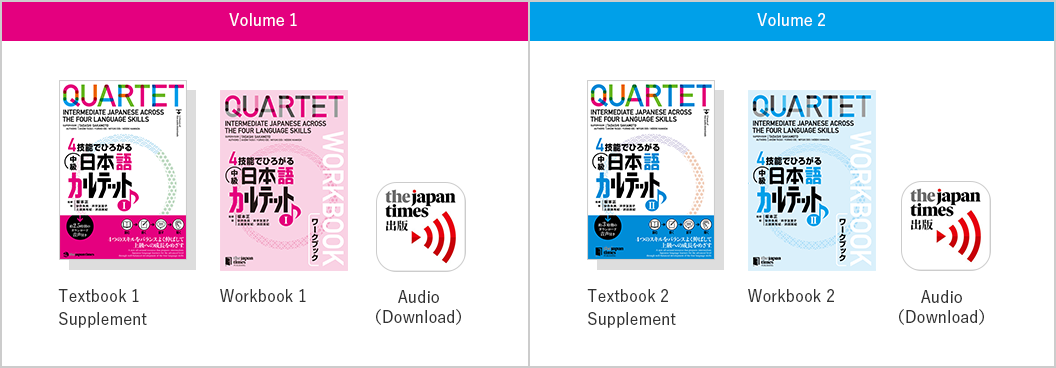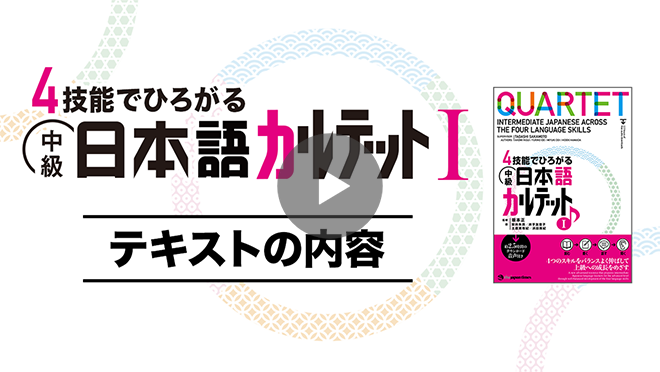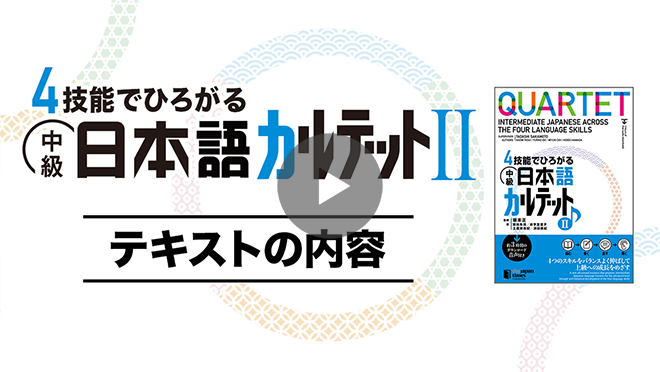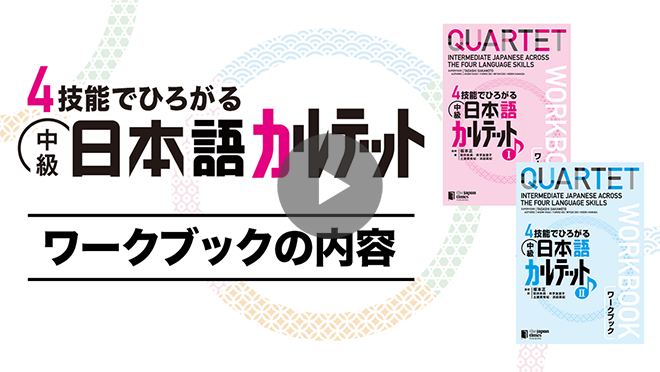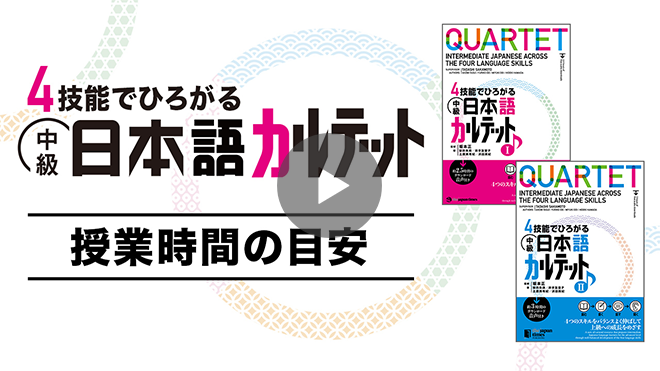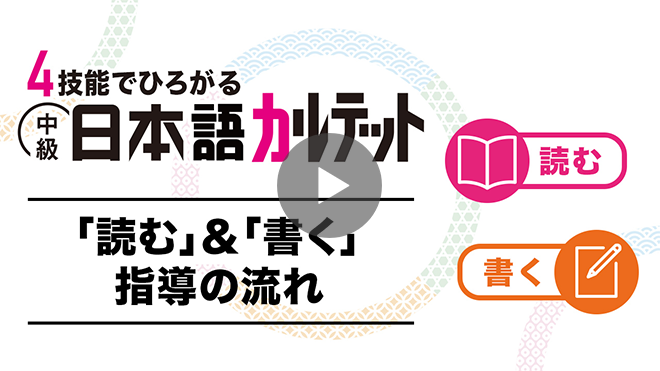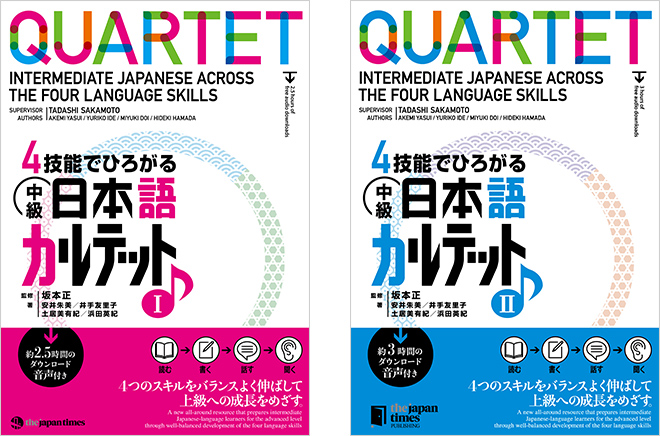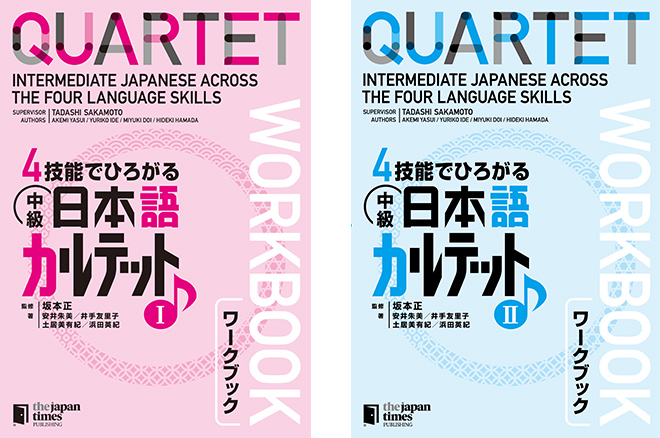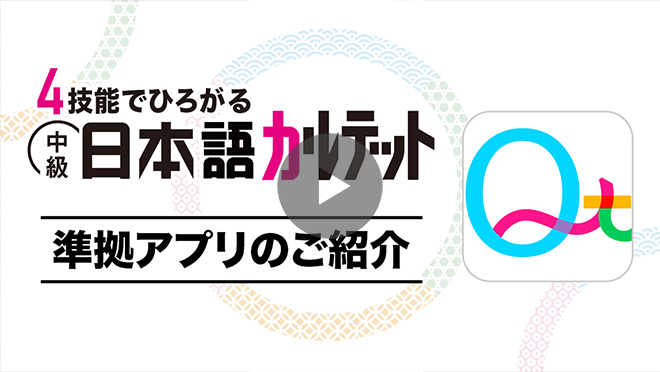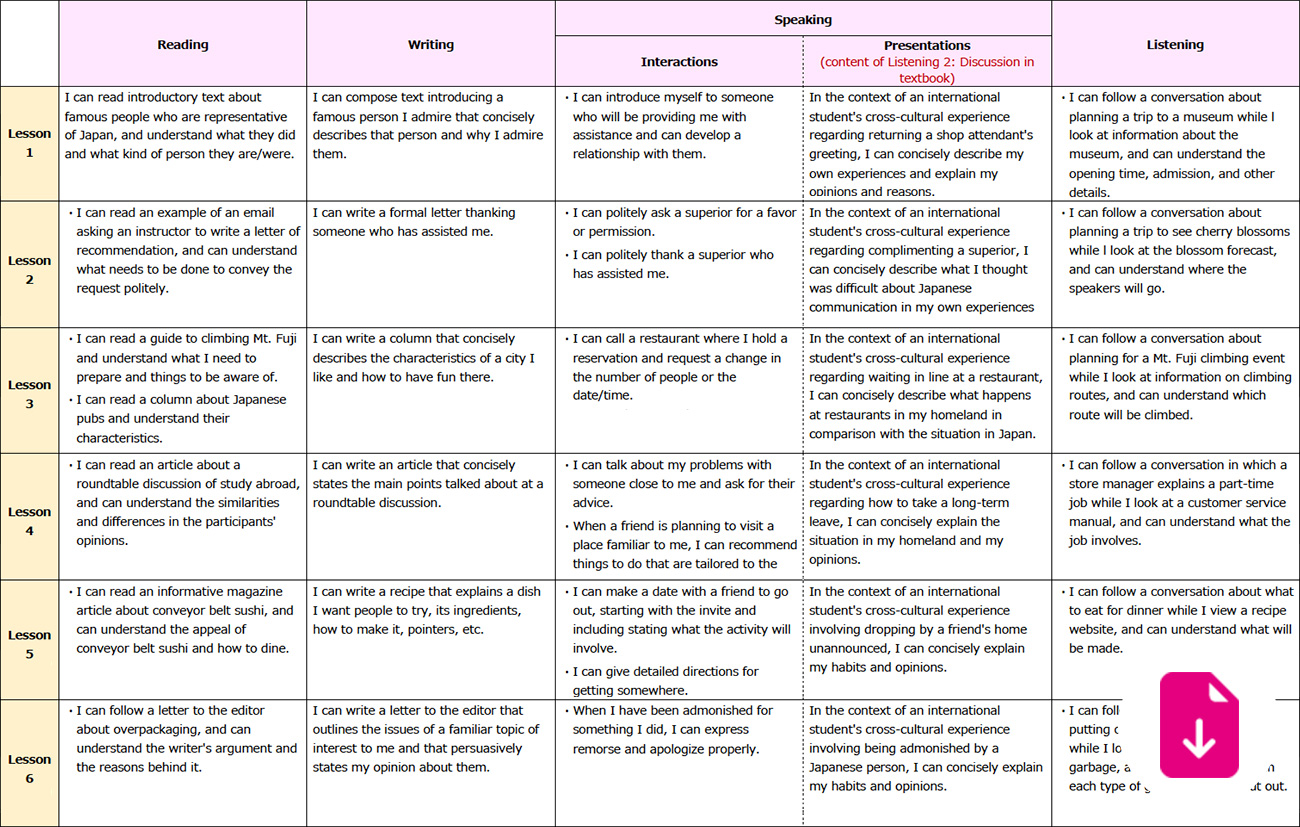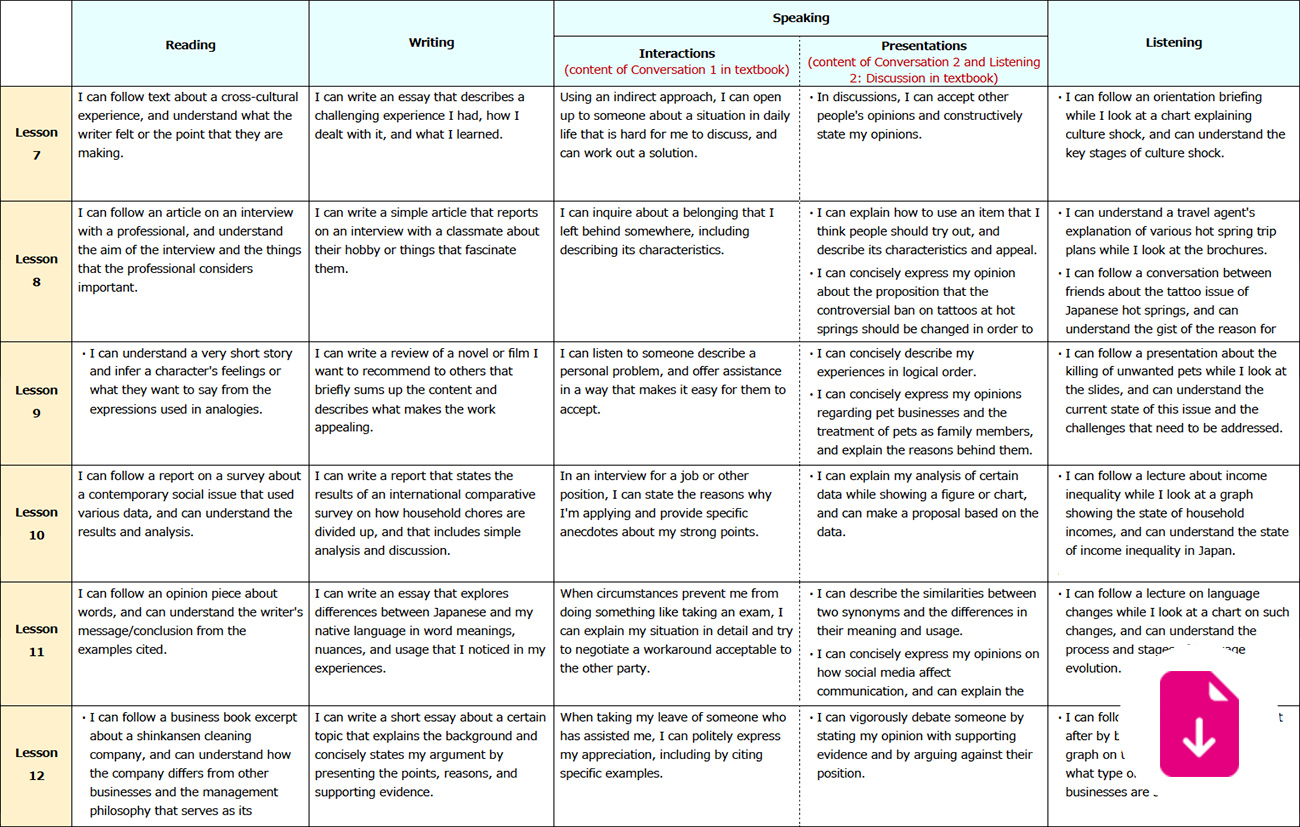What is QUARTET?
As its name indicates, QUARTET: Intermediate Japanese Across the Four Language Skills is designed to help intermediate Japanese-language learners build up the four skill areas—reading, writing, speaking, and listening—in a well-balanced manner. Quartet is divided into two textbook volumes, each with a workbook. Volume 1 presents Lessons 1–6, and Volume 2 covers Lessons 7–12.
